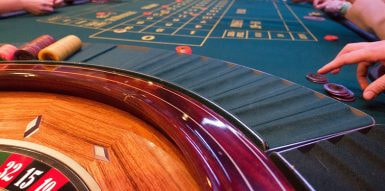The Slot Hacker
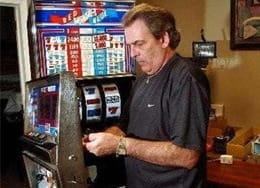 Hacking is a well-known danger nowadays, and online casinos spend a lot of money to protect their platforms. It is rather unlikely to play slots online with a huge welcome bonus and cheat in any way. Find out more details about the best offers for first-time players and how the gambling sites are protected in our specially dedicated casino offers review.
Hacking is a well-known danger nowadays, and online casinos spend a lot of money to protect their platforms. It is rather unlikely to play slots online with a huge welcome bonus and cheat in any way. Find out more details about the best offers for first-time players and how the gambling sites are protected in our specially dedicated casino offers review.
However, back in the 80s though, hacking a casino slot was a very personal affair – and required some hardware. Tommy Glenn Carmichael used to be a down-on-his-luck TV repair technician when one of his friends introduced him to the insides of an actual slot machine.
He immediately set out for Las Vegas, armed with a tool called “top-bottom joint” – a rather curious device made from guitar wire and a piece of spring steel. Carmichael would use the top-bottom joint to flip a switch in casino slots, and ‘convince’ them that the jackpot had been won.
“Give me a slot machine and I’ll beat it.” Tommy Glenn Carmichael
Of course, Tommy was ultimately caught and had to serve time in jail. By the time he got out, technology had marched on, and his old tricks no longer worked – but this is where he made his legacy. For more than a decade, Carmichael would be the one to come up with new tools that would crack casino slots. First, he created ‘The Monkey Paw’, and it was soon followed by ‘The Light Wand’ when more sophisticated sensors were introduced. To gather intelligence, the crafty scammer would even pose as a customer willing to buy a slot machine, and the manufacturers would explain everything about the security features that they used!
Carmichael was so successful that he sold his inventions on the black market and even managed to assemble a crew of his own to wreak havoc in Las Vegas and Atlantic city. At one point, he and his gang racked up about $5 million a day – until they got busted in 1996. Since then, the legendary slot hacker has (supposedly) righted his ways, and prefers to make honest money as a casino security consultant. He was even working on a new tool dubbed ‘The Protector’, which would put an end to slot busting once and for all – or at least that’s what he wants us to believe.
The Drunk Gambler
 A drunk man walks into a casino. He bets $15 dollars on roulette, wins, and does a wild jig as he will pocket over $1000. Anybody remotely familiar with roulette odds would be a little confused – and so is the croupier. The drunk gambler is Richard Marcus, a rather well-known name in the casino world (mostly because he self-advertises). He is one of few on this list that managed to get away with it, as he was relying on simple sleight-of-hand for his hustles and left no evidence behind. Richard’s signature move was dubbed ‘The Savvanah’, and he used it to attack casinos around the world, earning (allegedly) over $5 million in the process.
A drunk man walks into a casino. He bets $15 dollars on roulette, wins, and does a wild jig as he will pocket over $1000. Anybody remotely familiar with roulette odds would be a little confused – and so is the croupier. The drunk gambler is Richard Marcus, a rather well-known name in the casino world (mostly because he self-advertises). He is one of few on this list that managed to get away with it, as he was relying on simple sleight-of-hand for his hustles and left no evidence behind. Richard’s signature move was dubbed ‘The Savvanah’, and he used it to attack casinos around the world, earning (allegedly) over $5 million in the process.
His tactic was very straightforward – he would bet three red $5 chips on a roulette table, hiding a $500 brown chip beneath them. The trick relied on arranging the chips in a way in which the dealer would not see the brown one at the bottom. If Marcus won the game, all was good, and he would pocket over $1000. However, if he lost, then he would replace the brown chip, thus handing over only $15. For the whole thing to work, he had to pretend being drunk, which gave him some leeway with the confused dealers.
The ingenuity of the whole scheme lied in the fact that Marcus was not cheating when he won, but rather when he lost. There were already security cameras in place at the time, but the casino officers would only review the footage from his wins – not to mention that his trick was very hard to notice. He was eventually caught and prosecuted, after which he decided to change his line of work and officially ‘retired’ in 2000. Nowadays he writes books about scams and runs seminars about casino security.
The Cigarette Pack Scam
 Moving over to France, back in 1973 officials at Casino Deauville were left bewildered when a lucky gambler managed to earn 5 million francs (roughly $1 million at the time) on the roulette table over a week. As you well know, this is a notorious game of chance, and even the best roulette strategy would not rack up such winnings. The casino officials grew wary of an inside job, and kept a close watch on the lucky winner and the table croupier – but to no avail. They even hired an independent team of experts to take the roulette wheel apart and to examine it piece by piece for any traces of meddling, and still, they found nothing.
Moving over to France, back in 1973 officials at Casino Deauville were left bewildered when a lucky gambler managed to earn 5 million francs (roughly $1 million at the time) on the roulette table over a week. As you well know, this is a notorious game of chance, and even the best roulette strategy would not rack up such winnings. The casino officials grew wary of an inside job, and kept a close watch on the lucky winner and the table croupier – but to no avail. They even hired an independent team of experts to take the roulette wheel apart and to examine it piece by piece for any traces of meddling, and still, they found nothing.
While all this was going on, the casino owner had problems that struck closer to the heart. He had fallen head over heels for one of his customers, a beautiful brunette woman that had started to visit the casino every evening. His advances were rejected, but the owner stumbled upon an amazing discovery – the mysterious woman would always sit one table away from the lucky roulette player, and she hardly placed any bets at all. But most bizarrely of all, she also carried with her a pack of cigarettes at all times even though she never seemed to smoke! After putting two and two together, the casino owner finally asked the woman of his dreams for a smoke – with the head of security in tow.
It turned out that the cigarette pack was in fact a cleverly disguised radio transmitter that was used to manipulate the roulette ball. The initial suspicion of the casino staff had been correct – the croupier had been in on the scheme the whole time. He would replace the ball with a specially made duplicate containing a receiver each time his comrade sat at his table. Using the ‘cigarette pack’, the trio of hustlers had been able to control the spin of the ball and to predict where it would land. The raven-haired beauty was unveiled to be Monique Laurent; the croupier was her brother, while the player was her husband. This closely-knit group (almost) managed to beat the unbeatable game.
The Edge Master
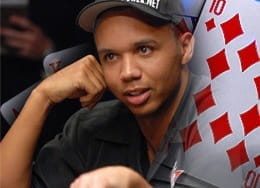 One of the more recent gambling scandals involved the famous Phil Ivey, proud holder of no less than ten World Series of Poker bracelets – however, he was caught cheating at baccarat rather than poker. Ivey got involved in two separate lawsuits with famous casinos over millions of dollars. In 2012, he managed to win $9.6 million at Borgata Casino in Atlantic, and £7.8 million in London’s Crockfords. The sums may seem staggering, but in the world of VIP gambling, they are not that unusual. Phil Ivey is a welcome customer at most casinos, but this time around both operators accused him of employing a technique called ‘edge sorting’.
One of the more recent gambling scandals involved the famous Phil Ivey, proud holder of no less than ten World Series of Poker bracelets – however, he was caught cheating at baccarat rather than poker. Ivey got involved in two separate lawsuits with famous casinos over millions of dollars. In 2012, he managed to win $9.6 million at Borgata Casino in Atlantic, and £7.8 million in London’s Crockfords. The sums may seem staggering, but in the world of VIP gambling, they are not that unusual. Phil Ivey is a welcome customer at most casinos, but this time around both operators accused him of employing a technique called ‘edge sorting’.
Edge sorting used to be neither here nor there in terms of cheating, simply because it was not widely known. Ivey had actually been taught how to use it by a partner, a Chinese woman named Cheung Yin Sun. The technique relies on identifying subtle printing defects on the backs of cards. If the pattern on the back of the card is faulty, then it is not the same when it is turned around. With enough patience – and if you are a VIP who can demand to play with the same deck – you could slowly sort the cards into ‘good’ and ‘bad’ over the course of a game. In baccarat, this would easily give you a substantial advantage over the house.
Edge sorting isn’t anything new, but Ivey certainly brought attention to it. London-based Crockford caught up to what he was doing and refused to pay him his winnings, but Borgata actually allowed him to walk out with the money. This lead to a rather lengthy court case which dragged on for years. To make things even spicier, Ivey was running a parallel lawsuit, this time as an accuser against Crockford. He claimed that edge sorting actually relied on skill and that he was due his winnings. Ultimately, the official authorities disagreed with his (bold) claim unanimously. Edge sorting is now officially considered cheating, all thanks to Ivey.
The Cutters Gang
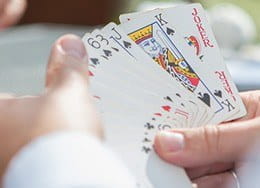 Shortly before Ivey and Sun made almost $20 million in London and Atlantic, another Asian group was touring baccarat tables in Las Vegas. It seems that the simplicity of the game tends to attract (overambitious) scammers, because those inconspicuous fellows managed to make a killing, shaking casinos for over $1 million. They decided to abuse the rule that in baccarat one of the players gets the chance to cut the deck before the game. There is nothing unusual in this – unless you have something up your sleeve. In the cutters’ case, that ‘something’ turned out to be a miniature spy camera.
Shortly before Ivey and Sun made almost $20 million in London and Atlantic, another Asian group was touring baccarat tables in Las Vegas. It seems that the simplicity of the game tends to attract (overambitious) scammers, because those inconspicuous fellows managed to make a killing, shaking casinos for over $1 million. They decided to abuse the rule that in baccarat one of the players gets the chance to cut the deck before the game. There is nothing unusual in this – unless you have something up your sleeve. In the cutters’ case, that ‘something’ turned out to be a miniature spy camera.
The designated cutter would always expose the cards to his camera. He would then excuse himself from the table, check the images, and convey the information to his colleagues. The gang played with perfect information and made a rather hefty profit. The authorities eventually wised up to that tactic, though ‘the cutters’ were never officially caught in Las Vegas – since the cameras were too tiny to be spotted, the casino officers had no legal justification to perform a full body check. However, the Asian fellows decided to change the climate, and eventually got busted way over in New Zealand.
The Walking Computer
Nowadays, using computers in casinos is illegal. Casino officials are wising up to all the little tech gadgets which can give you an edge at certain games. However, back in the 70s security wasn’t on the lookout for such tricks – mostly because a computer was as large as a room! Edward Thorp (coming soon!) had just revolutionized the field of card gaming by fighting casinos with maths, and Sunday school teacher and engineer Keith Taft decided to follow in his footsteps when he got hooked to blackjack in 1969.
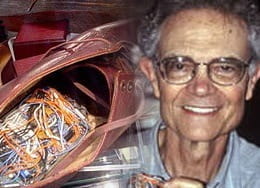 For all his passion, Taft was not a very gifted gambler, and sucked at card counting. However, instead of giving up, he decided to harness technology and tip the odds in his favour. At the time, technology took the shape of a 15-pound self-made computer named George. Using this monstrosity in the casino was not even strictly illegal; however, if caught, Taft would get kicked out for sure. He improvised, and divided the computer in several modules which he strapped around his body – and hid the controls in his shoes for good measure. The (mad) inventor would input data with his toes as he played, and receive signals about the state of the deck.
For all his passion, Taft was not a very gifted gambler, and sucked at card counting. However, instead of giving up, he decided to harness technology and tip the odds in his favour. At the time, technology took the shape of a 15-pound self-made computer named George. Using this monstrosity in the casino was not even strictly illegal; however, if caught, Taft would get kicked out for sure. He improvised, and divided the computer in several modules which he strapped around his body – and hid the controls in his shoes for good measure. The (mad) inventor would input data with his toes as he played, and receive signals about the state of the deck.
To Taft’s surprise, the ingenious stratagem failed miserably. He was simply not efficient enough, even with George’s help. It took Taft over 3 years to get over the disappointment and to perfect his technology. His next creation was David – as in David vs Goliath. More light-weight than George, this card-counter was far more successful and earned the inventor some impressive wins. Ultimately, he got busted by the FBI. Nowadays he would go to jail – but remember, back then using a computer was not considered illegal, and the casino authorities generally had no idea what all the electronics hidden in Taft’s shoes was supposed to do! Taft got away scot-free, and this emboldened him even further. Much to the chagrin of his wife, he allowed some his sons to enlist into the scheme.
Over the years, the Tafts armed themselves with all kinds of self-made gadgets: ‘Thor’ and ‘Narnia’ allowed them to deduce the positions of cards after a perfect shuffle, while the ‘belly telly’ was a tiny spy camera in the belt. At one point, Taft was even using his glasses to receive signals via LED lights – google glasses, anyone? – but those were far too easy to detect. Another experiment was the first computer network, which relied on wires running between the shoes of the scammers. Eventually, the evolving tactics of dealers and the eventual legal ban on the use of electronic devices in casinos got Taft out of commission during the 80s. However, for his unrivalled ingenuity, he earned a place in the Blackjack Hall of Fame.
“I really enjoyed the lab work. I liked developing the concepts and then implementing them. That’s been more enjoyable than going out and doing it. That’s always a very hostile challenge. You are always concerned about getting caught, and what that might mean.” Keith Taft
The First Card Counter
 A Math Professor walks into a casino – what’s the worst that can happen? Well, he could change the good old game of blackjack forever. You’ve probably heard about card counting – any blackjack fan knows about it. It is a system that can, theoretically, give the player an advantage over the house. Card counters have earned the reputation of dangerous people in the gambling world, and professional dealers tend to be on the lookout for them.
A Math Professor walks into a casino – what’s the worst that can happen? Well, he could change the good old game of blackjack forever. You’ve probably heard about card counting – any blackjack fan knows about it. It is a system that can, theoretically, give the player an advantage over the house. Card counters have earned the reputation of dangerous people in the gambling world, and professional dealers tend to be on the lookout for them.
The father of the system is called Edward Thorp. With a master’s in Physics and a doctorate in Mathematics, he really hadn’t had the time to learn much about casinos, before he was taken to Las Vegas during one of his holidays. There he developed a keen interest in the game of blackjack and the possible application of math in it. He conducted extensive research, employing his university’s computer – at the time, the machine weighed several tonnes – and came up with the very first system that could tell you when to raise your stakes at blackjack.
Casinos were left flabbergasted. Thorp was winning thousands every weekend, but they couldn’t catch him cheating. He had found the holy grail of the gambling world – a way to beat the system that lay within the rules of the game. To add insult to injury, in 1962 he published his findings in a book, which became an instant bestseller. Even though he could probably live off the royalties alone, Thorp took his winnings to the stock market and managed to beat Wallstreet as well. Nowadays, the witty professor is a prominent public figure and still considered one of the richest gamblers in the world.
“In the abstract, life is a mixture of chance and choice. Chance can be thought of as the cards you are dealt in life. Choice is how you play them.” Edward O. Thorp
Thorp’s discovery gave birth to a whole new generation of gamblers, who set out to beat the casino games armed with a rare combination of skills and knowledge. The idea that chance had to govern such games would be challenged, time and time again. The pinnacle of card-counting would ultimately become the infamous MIT blackjack team that terrorised the gambling world during the 80s and 90s, racking up millions in the process – but that’s a story for another time.



